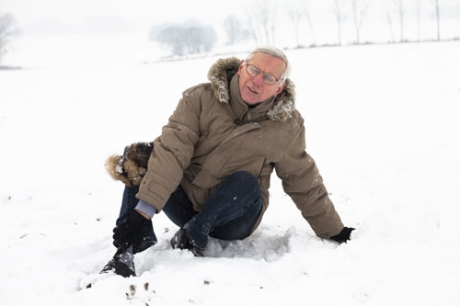Icy, snowy conditions can pose serious health and safety threats.
Over the winter months, we see a definite increase in fractures (breaks in the bones), sprains and other orthopedic injuries, resulting from slips and falls, and even from skidding accidents involving motor vehicles.
Broken ankles are one of the most common fracture types and can be caused by slipping and twisting the ankle while trying to navigate slippery surfaces.
If you fall on the ice and hurt your ankle this winter, don’t put off waiting to see a doctor. The ability to walk or hobble on your injured ankle doesn’t necessarily mean that your ankle isn’t broken or badly sprained. It’s best to have an injured ankle evaluated by an orthopedic surgeon as soon as possible. Only an x-ray and thorough examination by an orthopedic surgeon can determine the extent of your injury.
Putting weight on an injured ankle joint can worsen the problem and may lead to chronic instability, joint pain and even arthritis later in life. If you can’t see an orthopedic surgeon or visit an emergency room right away, follow the R.I.C.E. method – Rest, Ice, Compression and Elevation – until medical care is available.
The ankle joint is especially vulnerable to serious injury from hard falls on ice. Ice accelerates the fall and often causes more severe trauma, because the foot can go in any direction after it slips as well as bearing the weight of your body as you fall.
Falling on winter ice can cause simultaneous ankle sprains and fractures. It is possible to both fracture and sprain an ankle from a fall, and a bad sprain can mask the fracture.
Most ankle fractures and some sprains are treated by immobilizing the joint in a cast or splint. Surgery may be needed to repair fractures with significant misalignments. New surgical plates and screws enable orthopedic surgeons to repair these injuries more quickly and with less surgical trauma.
Newer bone-fixation methods require smaller incisions, minimizing tissue damage and bleeding, reducing the risk of infection, and accelerating the healing process.

